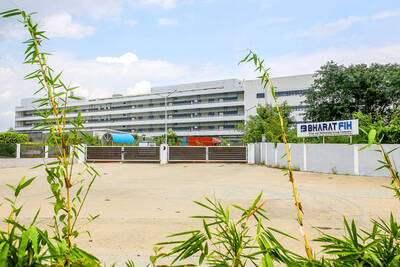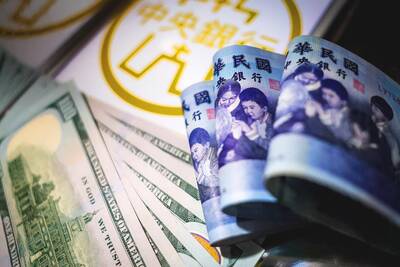Sinphar Group (杏輝醫藥集團) on Friday held a biomedical forum in Taipei about pancreatic cancer treatment and its new drug development efforts, saying Folfirinox is still superior in first-line chemotherapy treatment for late-stage pancreatic cancer compared with other drugs.
Among first-line treatments for pancreatic cancer, clinical trials have shown that Folfirinox has produced an overall survival period of 11.1 months among patients, exceeding the 6.8 months of the standard gemcitabine chemotherapy, the company said.
About 340,000 people worldwide are diagnosed with pancreatic cancer each year and the number has continued to increase every year, according to American Society of Clinical Oncology data.
Pancreatic cancer is the eighth-leading cause of death from cancer in Taiwan, with 1,948 people dying from pancreatic cancer in 2015, Health Promotion Administration data showed.
While Folfirinox is designed for patients who require continued treatment, but have exhausted other first-line options, the regimen has a limited market in Taiwan as it is not covered by the National Health Insurance program and therefore is less prescribed by physicians, Sinphar said.
Despite rising use in Europe and North America as well as a track record of longer survival periods, there are few pancreatic cancer patients in Taiwan who have elected to pay out of pocket to undergo treatment with Folfirinox, SynCore Biotechnology Co (杏國新藥) general manager Su Muh-hwan (蘇慕寰) said on the sidelines of the forum.
SynCore, the group’s new drug development subsidiary, is developing a second-line treatment for pancreatic cancer, SB05 PC, which has begun its global phase III study, Su said.
SynCore’s board last month approved plans to provide NT$20 million (US$687,262) toward sponsoring Folfirinox treatments overseen by the National Health Research Institutes, as well as covering the cost of the regimen for patients under the care of select hospitals working with the company.
Another reason Folfirinox has not been widely prescribed in Taiwan is due to differences between Taiwanese doctors and their counterparts in Europe and North America, Su said.
European and North American physicians are more likely to prescribe the drug because it leads to a longer survival period for patients, while Taiwanese doctors are apprehensive about the lack of a readily available second-line treatment if the disease continues to progress, he said.
Despite its superior survival results, that Folfirinox is comprised of four chemotherapy drugs means that patients are more heavily affected by its higher toxicity, Su said, adding that the drug is more widely prescribed to younger European and North American patients who generally are in better physical condition.

SETBACK: Apple’s India iPhone push has been disrupted after Foxconn recalled hundreds of Chinese engineers, amid Beijing’s attempts to curb tech transfers Apple Inc assembly partner Hon Hai Precision Industry Co (鴻海精密), also known internationally as Foxconn Technology Group (富士康科技集團), has recalled about 300 Chinese engineers from a factory in India, the latest setback for the iPhone maker’s push to rapidly expand in the country. The extraction of Chinese workers from the factory of Yuzhan Technology (India) Private Ltd, a Hon Hai component unit, in southern Tamil Nadu state, is the second such move in a few months. The company has started flying in Taiwanese engineers to replace staff leaving, people familiar with the matter said, asking not to be named, as the

The prices of gasoline and diesel at domestic fuel stations are to rise NT$0.1 and NT$0.4 per liter this week respectively, after international crude oil prices rose last week, CPC Corp, Taiwan (台灣中油) and Formosa Petrochemical Corp (台塑石化) announced yesterday. Effective today, gasoline prices at CPC and Formosa stations are to rise to NT$27.3, NT$28.8 and NT$30.8 per liter for 92, 95 and 98-octane unleaded gasoline respectively, the companies said in separate statements. The price of premium diesel is to rise to NT$26.2 per liter at CPC stations and NT$26 at Formosa pumps, they said. The announcements came after international crude oil prices

DOLLAR SIGNS: The central bank rejected claims that the NT dollar had appreciated 10 percentage points more than the yen or the won against the greenback The New Taiwan dollar yesterday fell for a sixth day to its weakest level in three months, driven by equity-related outflows and reactions to an economics official’s exchange rate remarks. The NT dollar slid NT$0.197, or 0.65 percent, to close at NT$30.505 per US dollar, central bank data showed. The local currency has depreciated 1.97 percent so far this month, ranking as the weakest performer among Asian currencies. Dealers attributed the retreat to foreign investors wiring capital gains and dividends abroad after taking profit in local shares. They also pointed to reports that Washington might consider taking equity stakes in chipmakers, including Taiwan Semiconductor

A German company is putting used electric vehicle batteries to new use by stacking them into fridge-size units that homes and businesses can use to store their excess solar and wind energy. This week, the company Voltfang — which means “catching volts” — opened its first industrial site in Aachen, Germany, near the Belgian and Dutch borders. With about 100 staff, Voltfang says it is the biggest facility of its kind in Europe in the budding sector of refurbishing lithium-ion batteries. Its CEO David Oudsandji hopes it would help Europe’s biggest economy ween itself off fossil fuels and increasingly rely on climate-friendly renewables. While